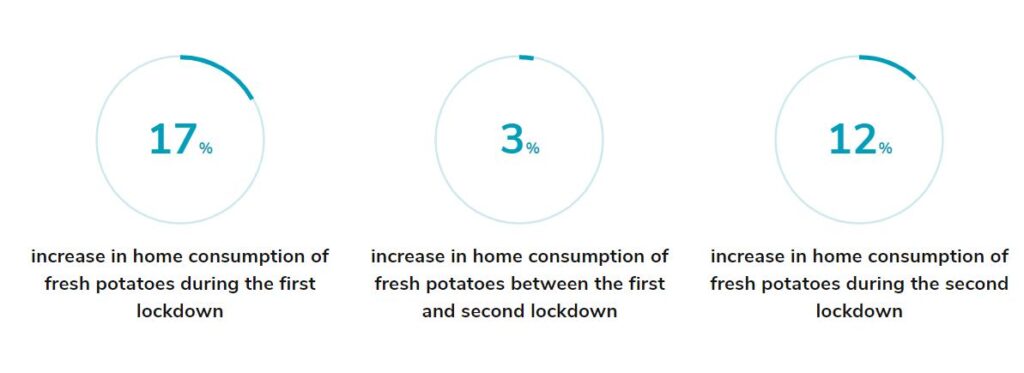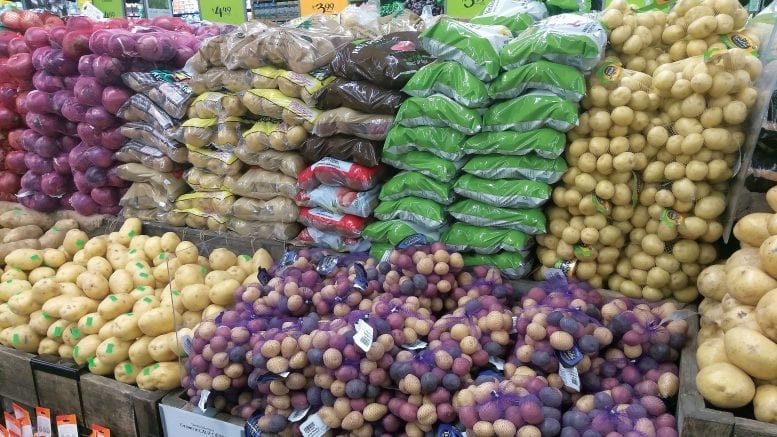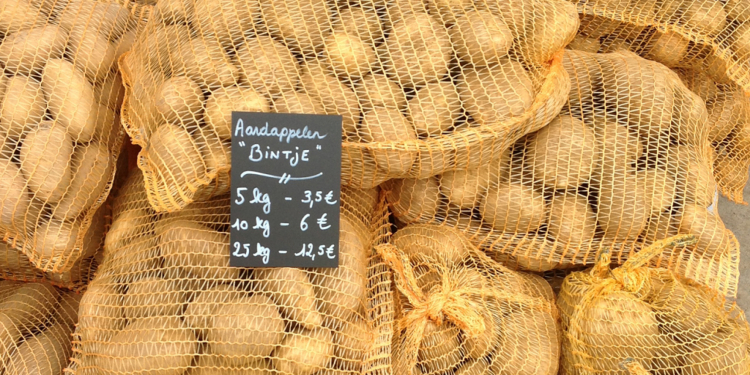Home consumption of fresh potatoes increased by eight percent last year. Due to the corona pandemic, the downward trend in home consumption of potatoes came to an end. On an average day, 41 percent of Belgians ate potatoes at home in 2020. This makes them the most important meal companion. This is apparent from research carried out on behalf of VLAM.
In an online survey conducted by iVox, every day of 2020, consumers were asked what they ate the day before the survey. This study, called Consumption Tracker, shows that 41 percent of Belgians ate potatoes. Pasta (23%), followed by rice (9%), noodles (3%) and quinoa (1%). In proportion, it is the slightly older consumers (55-64 years), Flemish, families with children, the lower educated, rural residents and people with Belgian roots who eat potatoes. Boiled potatoes remain the most popular method of preparation, followed by French fries, mashed potatoes and baked potatoes.
Home is the main consumption place for potatoes, but there is an important difference when it comes to the preparation method. “At home we mainly eat boiled potatoes and other non-fried preparations. We eat fries outside the home more often (47%)”, says VLAM on the basis of GfK figures.
Due to covid-19 and the associated measures regarding the closure of the catering industry and home work, we have started to consume non-fried potatoes at home even more. If we ate boiled potatoes in 2020, it happened at home in nine out of ten cases. The home consumption of fries also increased exponentially during the pandemic: from 53 percent in 2017 to 70 percent in 2020. 12.3 percent of Belgians still ate French fries, this has fallen to 10.6 percent in 2020,” it sounds.

Corona also had an impact on the home consumption figures of fresh potatoes. After a decrease in home consumption from 23.3 kilos per capita in 2016 to 20.5 kilos in 2019, this increased again in 2020 to 22 kilos per capita. That’s an eight percent increase. The volume increase was greatest during the first lockdown (+17%). Between the two lockdowns, it was an increase of three percent and in the second lockdown it was an increase of 12 percent.
Fresh potatoes are a product that almost all families in Belgium buy. They have an annual penetration of 90 percent. A family buys fresh potatoes on average 14 times a year. The number of buying households remained stable in previous years, but the purchase frequency decreased slightly. The biggest decrease is in the volume per purchase. Packaging smaller than five kilos is becoming increasingly popular.
Although a reverse trend was noticed during the corona crisis: the larger packaging was again more popular. This was partly due to the fact that more people were cooking themselves, but also because people went to the store less often to reduce the risk of contamination. In addition, more was bought in specialist shops and via the short chain, where relatively larger quantities of potatoes are often purchased.
Three quarters of the potatoes purchased are of Belgian origin. This is a slight increase compared to 2019. The share of Belgian potatoes is, of course, highest when purchased directly from the farm. But the share is also above 80 percent at the larger supermarkets and the neighborhood supermarkets. At the hard discount, such as Aldi and Lidl, the share of homegrown potatoes is the lowest (67%).
Organic potatoes have increased in volume share in recent years: from 3.4 percent in 2016 to five percent in 2019. In 2020, the share of organic remained at 4.9 percent.

- The survey was conducted among 19,800 consumers from 18 European countries. They were asked about their confidence in the food sector and in food products. Although confidence in the sector has increased in 2020, the researchers found that the majority of consumers are not convinced that the food sector works in the public interest.
- “The most striking result of the study is the difference in trust between the actors in the chain,” explains Liesbet Vranken, professor of Bioeconomy at KU Leuven. Confidence in farmers, retailers, processing companies and government agencies was also surveyed. “Farmers have seen a smaller increase than the other three, but that is probably because that group has already started at a higher percentage,” it sounds. Two-thirds of consumers say they trust farmers, while only 13 percent do not.
Source: Own reporting


